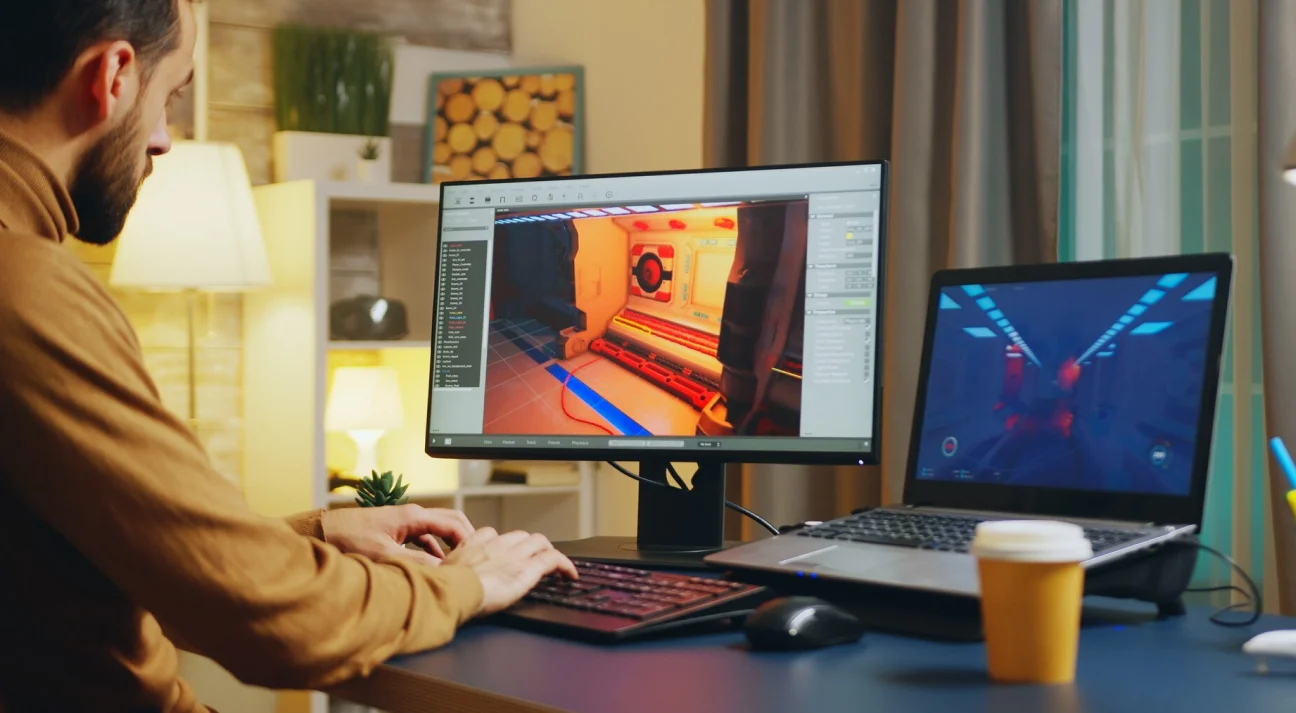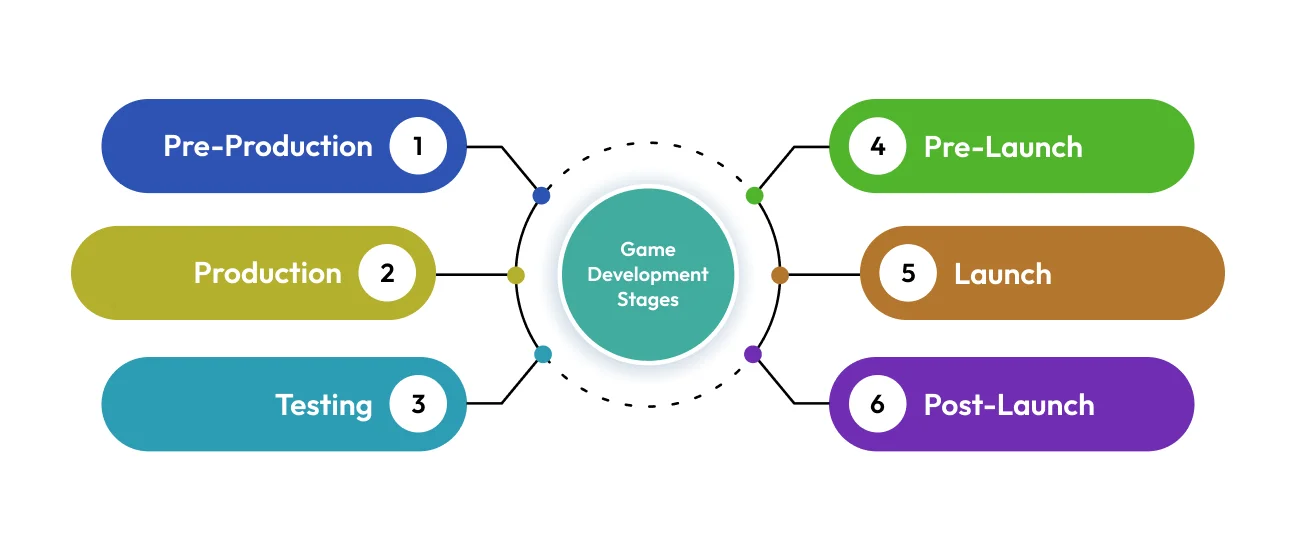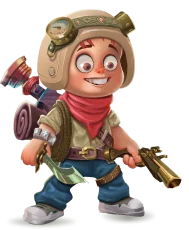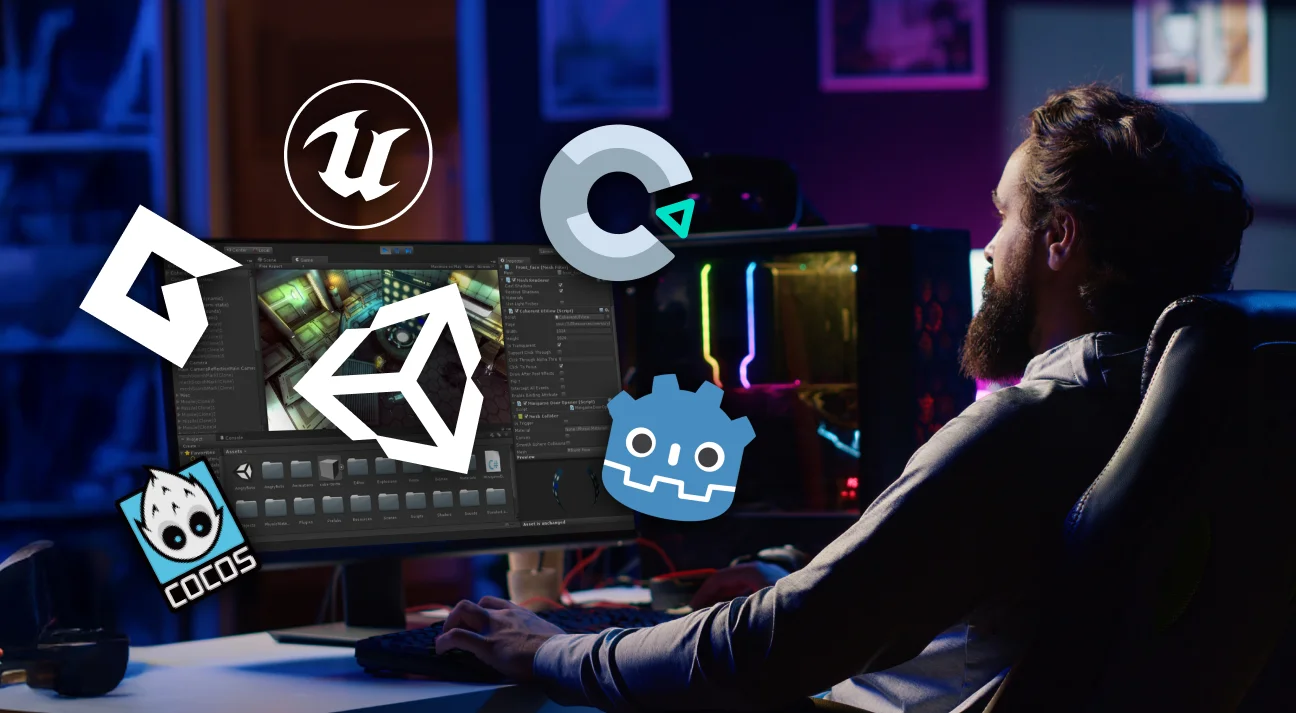
An Ultimate Guide to Game Development Process
In this blog, we’ll uncover the 6 stages of game development & all you need to know about what happens behind the scenes of your favorite games. We have you covered, from game idea planning to bug fixes in post-launch upgrades. We’ll also include some insider secrets and fun anecdotes to keep things interesting! Let us fall in and level up together!
MAKING GAMES… YEEEAAAA… SOUNDS SO COOL & FUN!!!
Before we dive into the stages of game development, we just want to say that game creator are more than just creators—they’re game fanatics! They don’t just play or make games; they live and breathe them!
On the flip side, you’ve got deadlines looming over you, along with various production challenges like testing, bugs, and changes. But you know what? Once you get the stages of game development right, everything falls into place.
Let’s dive into the stages of game development—from designing characters and gameplay to launching the game and celebrating with your game dev team over coffee! But before we get into the nitty-gritty, remember this: one magical game can captivate millions of gamers.
6 Main Stages of Game Development
The foundation of game development phases consists of 6 main stages: pre-production, production, testing, pre-launch, launch and post-launch. The scale and requirements of the game also play a crucial role in determining the overall game development phases.

1. Pre-Production
The very first stage in stages of video game development should always be planning though many companies ignore this as they are in full hurry to GET THE WORK DONE ASAP. When you plan out the things, it totally helps first in the clarity of the project and then game devs also can plan the technicalities better. Managers and product owners determine the project’s goals and business and build a roadmap outlining the main concept.
The pre-production phase also involves checking out the market, competitors, and target audience, deciding on a platform, allocating resources, and working out strategies and risks. Once you’ve nailed down the requirements, a detailed Game Design Document is put together to kickstart the production stage.
One other work is to find the answers to certain questions that goes like below:
Here’s a more informal take on your questions:
Who’s the target audience, and what’s the potential market size?
What’s the game about (genre, plot, and general gameplay)?
What platform will the game be published on?
What’s the expected timeline for game development?
What teams do we need to make this happen?
How will we monetize the game?
In such a stage of the game, you don’t need the involvement of the whole team, a production manager, a conceptual artist, and a programmer is enough. After all this, GDD (Game Design Document) comes into the picture,
A Game Design Document (GDD) lays out all the essential details to give the whole team a complete vision of the game. Think of it as the game’s blueprint—it’s the guide everyone follows to bring the game to life. This doc wraps up the pre-production stage of game development and includes things like:
- The big idea
- Tech and genre
- Core gameplay mechanics
- Storyline and characters
- Game world and levels
- Storyboard and art sketches
- Development plan
- Business strategy (how we’re making money)
Once the GDD is created, the plan should remain unchanged—it’s fixed and final! Coordination, discussions, and implementation begin, but it’s important not to disrupt the GDD, as it is essential for sticking to the project’s timeline and estimated video game development cost.
2. Production
The production clearly feels like the final World Cup match, you’re actually putting all your efforts here and there is no place to go wrong. The things that you’ve planned in the pre-production stage, the team works accordingly.
Creating characters, in-game objects, locations, and UI elements with 2D/3D graphics and visual effects is the most time-consuming part of the process. There are lots of rounds of tweaks and changes as the game assets get fine-tuned to fit the game’s style and match the GDD.
Programmers start doing their job by connecting the game world to the players, using their preferred engines for better playability.
Sound Engineers and actors (If any), work on the sounds and theme music of the game. Wait, pause, breath…. At this stage of the blog, we really appreciate the time you’re giving in learning, and we wish you the best!
Back to the music, the soundtrack plays a huge role in the game’s success. Imagine iconic Mario Bros with a light BGM that has no soul—it wouldn’t feel right! So, the whole team is involved, from the music composer to the person clicking the launch button.
Before the final launch of the game, there are several hallmarks it travels through:
- First Playable: This stage builds on prototyping by swapping out placeholder assets for top-notch custom ones. Characters and props get a glow-up with fresh artwork. It’s not the final version yet, but it paints a clearer picture of the game than the prototype.
- Fully Playable Sample: A fully playable sample is something you can share with stakeholders, investors, or studios to let them play the game in a short period. This helps them get an idea of the gameplay.
- Pre-Alpha: This is when game creators lock in the big-picture vision for the whole game and start adding its content to upcoming versions and development stages. After pre-alpha, you shouldn’t expect any major gameplay changes.
- Alpha: This is a complete, fully playable sample that covers the entire gameplay from start to finish. The game mechanics and functions should work smoothly, even if a few extra assets and elements still need to be added. Alpha gives QA engineers the chance to test how the whole game functions.
- Beta: Beta stage is the last stage before the final launch of the game. Once all the assets and elements are in place, the creative team can tweak the game’s technical and visual details without changing the core gameplay. A test audience can try out the Beta version and give feedback to the development team before the final release.
- Final Release: All done, just PRESS THE GODDAMN RELEASE BUTTON!!!!
3: Testing
“Testing and production in game development go together like peanut butter and jelly—it’s all about the perfect blend! Think of it as a dance, not a sprint—round and round we go!”
Every feature and mechanic in the stages of the video game development stage must be checked for quality assurance even if it’s being made by expert game developers. A game that has not undergone extensive testing is not even ready for Alpha release. It’s as simple as that.
Game testing has a lot to do with quality assurance and therefore you ought to raise the below questions:
- How is the Game Looking Overall on the Screen? Is it rendered well?
- Are there any bugs?
- Does the game look realistic?
- Are there elements players can mess with in a bad way?
- Are the dialogues suiting the gameplay?
Every QA team is made up of specialists with particular duties. One person does stress testing to push the game to its limits, another assesses the ‘fun factor’ to ensure the game isn’t too difficult (or too easy), yet another hunts for bugs and checks for audio difficulties, etc.
4: Pre-Launch
During the pre-launch stage in the stages of game development, developers usually show a Beta version to a small group of people. Before the official release, the game exits the devs’ inner circle and meets a bigger audience. How big the pre-launch is depends on the marketing budget: more cash for promotion means a wider range of players testing the game.
Sometimes being too technical makes the process boring and this should never come in the mobile game development process and that’s when you check whether the game is exciting or not.
One other thing is that a special promo video with gameplay snippets often grabs publishers’ attention. Public gaming events attract industry experts, pro players, bloggers, and journalists to try out a new game. Their opinions can be surprising and bring up doubts for the creators. Pre-launch is a psychological challenge for any game development company, no matter the promotion budget. Based on public feedback, it sets the time needed to turn a Beta version into the final one.
5: Launch
Us to a 10th-grade student: What’s been done in the exam is done, it cannot be changed. The same goes for the game. A breath and a sigh of relief for the developers and enjoy the audience’s reactions after contributing all during the stages of video game development.
The bad news for a lazy game dev is this does not remain for long. When the game is released, the game development is not over, the post-launch stage takes place. We swear this is the last.
6: Post-Launch
Post-launch is when the real fun begins for any gaming studio! After years of hard work, the video game sales should (fingers crossed!) be rolling in. But hey, the job’s not over yet!
Don’t be surprised if video games launch with some minor bugs. That’s the drill of stages of game development! The first few months post-launch are all about hunting down and fixing these little issues. Studios also count on players to report bugs or talk about them in online forums. It’s all part of keeping the game running smoothly!
After launch, studios keep things fresh by rolling out software updates, patches, and downloadable content. Think of new levels, assets, storylines, and even characters added over time. The intensity of communication between the studio and the player community drives this. Games can’t stay static if they’re a big deal, especially in crypto-based metaverses where in-game items evolve through NFT-wrapped content.
“NFT here, NFT there, gaming has evolved so much” A random veteran old gamer.

Concluding Thoughts
Thanks for sticking with us through the technical side of the game development stages. People often think making games is all fun—it is, but there’s also a lot of serious work involved to give users the best experience. It’s never boring unless you’re forced into it.
This blog of stages of game development is nothing compared to the actual process of making games but it is a good base to start with. Just note, that gaming is never SERIOUS but you gotta be when making it look great. And of course, reach the game development company…P.S Needless to say.
Video game development is a wild ride, even for veteran studios with huge teams. But getting a handle on the ups and downs of each stage is key to creating a polished game.
Remember, no two games are the same, even from the same studio. In game development, you’ll hit roadblocks, miss deadlines, and deal with tool limitations—it’s all part of the journey!
If you’re looking for a team full of experts who are fun to work with in making games then we just feel shy in praising ourselves. If we say it in short, 300Mind studios are top guns in the industry who have made some dope games that people love to play, From classic Dots and Boxes – A New Era to everyone’s favorite Bal Hanuman, we’ve made it all.
Keep Playing Games & Keep Being a Kid!
Cheers!!








